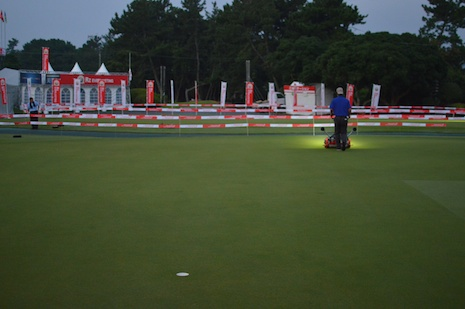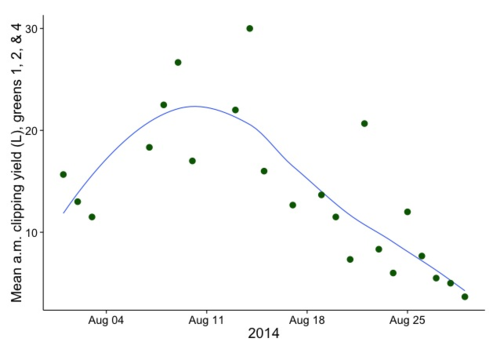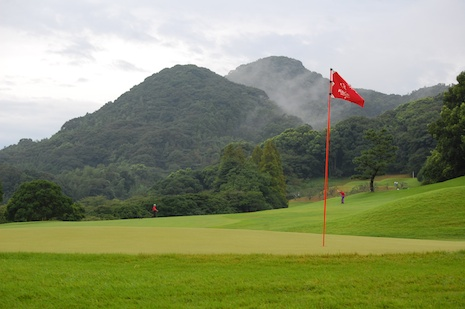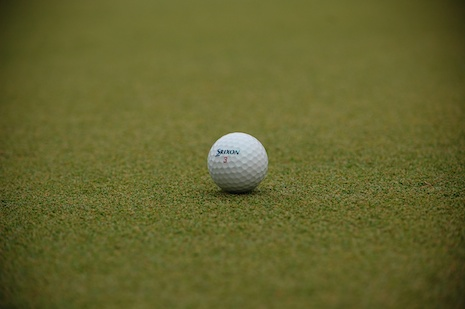Chapter 2 More about the measurement of grass clippings

Two liters of clippings from the putting green
One can measure the volume of clippings collected when mowing greens through the simple process of bringing along a bucket to empty the clippings into.2
This technique is used at Keya GC in Fukuoka, the host club for this week’s KBC Augusta tournament. The greensmowers bring along a bucket and take note of the volume of clippings collected from each green.

Mowing the practice putting greens at Keya GC
In a previous post, I mentioned some of the ways that this information can be put to use. Here at Keya, the target for tournament week was to be at less than 10 L per green. During the 2013 tournament, the clipping volume averaged 11.8 L per green during tournament week, and 5.3 L per green in the week immediately after tournament week. The course superintendent, Andrew McDaniel, thought that putting surfaces for the 2014 tournament would be best if the clipping volume were slightly less than in 2013.
The clipping volume is collected year round, and from most of the greens. I’ve taken a subset of the 2014 data and plotted it for the month of August, with the average clipping volume from greens 1, 2, and 4, just to show how the yield has been this month, through this morning, the 2nd round of the tournament.

August 2014 clipping volume from three greens at Keya GC
It looks like the clipping yield is close to the target range. By tracking the amount of clippings, one can adjust nitrogen rate, growth regulator applications, and mowing height and amount of mowing in order to modify the amount of clippings.
The use (or not) of brushes, or groomers, or the effects of various other maintenance practices can be evaluated when the clipping volume data are available. The Shibaura G-EXE22 mowers used on the greens can be fitted with this brush.

Brush fitted between the front roller and the bedknife on the Shibaura G-EXE22
Andrew found that use of the brush increased the number of clippings by a factor of 2. During the tournament, the brushes are not being used, but in the lead up to the tournament, the brushes were used to increase the amount of clippings and help create the desired surfaces.

View from behind the 14th green at Keya GC
Now, during tournament week, the korai (Zoysia matrella) greens at Keya GC are growing at just the desired rate, and the mowers are removing the targeted amount of clippings. It doesn’t take much extra time to collect this information, and having a time series of these clipping volume data can help a turf manager make decisions about the adjustments to make in green maintenance.

Korai green surface at Keya GC
When I shared the information in the first chapter in 2014, there was a lot of discussion about this topic. I wrote this as a follow-up post a few days later (https://www.blog.asianturfgrass.com/2014/08/more-about-the-measurement-of-grass-clippings.html).↩